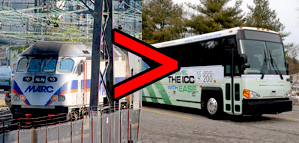|
Special Features





Image Libraries


|
|
Blog
There was good news and bad news for Maryland transit yesterday.
The bad news was Maryland’s decision to cut bus service on the ICC. The good news was that the Purple Line, Corridor Cities Transitway, and Baltimore Red Line are all advancing, and that MARC’s Penn Line will start running on the weekend.
Overall, that’s a huge net gain for transit in Maryland.
The new BRT and light rail lines are still years away, but weekend MARC service could start as soon as this winter. The MARC news alone is a bigger win for transit than the ICC buses are a loss.
Not that there’s actually any trade here. MARC isn’t expanding service because ICC buses are going away. The two are unrelated. Just that, as a transit user, if I were given the choice between those two things, I’d definitely pick weekend MARC.
And although Maryland is deservedly criticized for the ICC, it’s also worth noting that the ICC is in the past, and the state’s current plans are extremely progressive.
Most of the new state’s new transportation money is going to transit instead of roads, and most of the road projects are relatively reasonable. There are plenty of proposed interchange improvements and widenings, but there’s no sprawl-inducing, traffic-generating outer beltway.
Average Rating: 4.4 out of 5 based on 295 user reviews.
May 17th, 2013 | Permalink
Tags: BRT, bus, commuterrail, lightrail, roads/cars, transportation

|
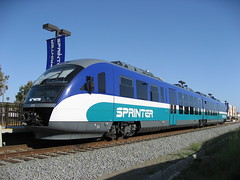
DMU train in San Diego. Photo by mrpeachum on flickr. |
In the DC region we have Metro and commuter rail trains, with light rail, streetcars, and BRT all in the works. And of course, regular buses. But one common mode we don’t have is DMU trains, which bridge the gap between light rail and commuter rail.
DMU stands for Diesel Multiple Unit. DMU trains are intended to operate on routes that look like commuter rail, but at almost light rail frequency. They go over long distances, with infrequent stations, usually on or adjacent to freight tracks. But instead of coming only at rush hour, trains come all day long, as often as every 15-20 minutes.
That’s a great service model for suburban corridors that need something better than rush-hour MARC or VRE service, but are too far away for light rail and don’t have the density to justify the costs of Metrorail.
DMUs, and their electric cousin EMUs, are used in Philadelphia, New Jersey, Portland, San Diego, Dallas, and Austin. They’re proposed in even more cities.
|
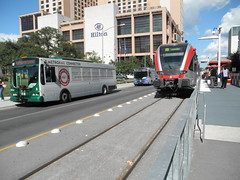
Austin DMU on-street. Photo by paulkimo90 on flickr. |
One big advantage of DMUs over traditional commuter trains is that DMUs can operate on-street, like light rail. That makes integrating them with downtown areas much easier, because it frees DMUs to go anywhere, rather than only to a city’s main rail hub.
All MARC and VRE trains to DC must go to Union Station, because all the long distance tracks through DC go to Union Station. Not only does that constrain route planning, it’s also a limit on capacity, because there are only so many platforms at Union Station. But a DMU could go anywhere.
There are not currently any plans for DMU lines in the DC region, but there could be. DMU would be a great solution for Maryland’s proposed Charles County corridor or Fairfax’s Route 28. Officials are looking at light rail for those corridors, but they’re far out in the suburbs and wouldn’t have very frequent stops, so DMU might be more appropriate.
In the long term it might also make sense to convert some of MARC and VRE’s existing lines to DMU, or to supplement them with more DMU trains. That would give them more operational flexibility, and could increase service. But MARC and VRE are established as traditional commuter rail, and may be uncomfortable with anything else.
MARC and VRE also have to use tracks owned by freight companies. DMUs can be used in mixed company with freight, although that requires federal approval. But if the freight lines are already using their tracks to capacity, which is common in the DC area, then there’s no room for more trains no matter what they look like.
DMU isn’t Metro, and it isn’t light rail. DMU trains can’t do all the things those modes can do. It’s not an appropriate mode where frequent stops are necessary. But for long corridors with infrequent stops and moderate capacity needs, it’s ideal. We should keep in mind as we continue to advocate for new transit lines.
 Cross-posted at Greater Greater Washington. Cross-posted at Greater Greater Washington.
Average Rating: 4.5 out of 5 based on 245 user reviews.
April 9th, 2013 | Permalink
Tags: commuterrail, lightrail, proposal, transportation

|
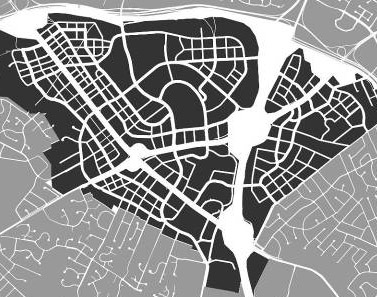
Tysons grid of streets, no. 2. |
Maryland and Virginia will both enact major new transportation funding bills this year. Neither bill says exactly which projects will be funded, but here are the top 10 projects in Maryland and Virginia that most deserve to get some of the funds.
Number 1: 8-car Metro trains. Metrorail is near capacity, especially in Virginia. More Metro railcars would mean more 8-car trains on the Orange, Blue, and Silver Lines.
Number 2: Tysons grid of streets. Tysons Corner has more office space than downtown Baltimore and Richmond put together. Converting it to a functional urban place is a huge priority.
Number 3: Purple Line. Bethesda, Silver Spring, Langley Park, College Park, New Carrollton. That’s a serious string of transit-friendly pearls. The Purple Line will be one of America’s best light rail lines on the day it opens.
Number 4: Baltimore Red Line. Baltimore has a subway line and a light rail line, but they don’t work together very well as a system. The Red Line will greatly improve the reach of Baltimore’s rail system.
Number 5: Silver Line Phase 2. The Silver Line extension from Reston to Dulles Airport and Loudoun County is one of the few projects that was earmarked in Virginia’s bill, to the tune of $300 million.
Number 6: Arlington streetcars. The Columbia Pike and Crystal City streetcars both have funding plans already, but could potentially be accelerated.
Number 7: Route 7 transit. Leesburg Pike is the next Rosslyn-Ballston corridor waiting to happen. Virginia is just beginning to study either a light rail or BRT line along it.
|

Corridor Cities Transitway, no. 8. |
Number 6: Corridor Cities Transitway. Gaithersburg has been waiting decades for a quality transit line to build around. BRT will finally connect the many new urbanist communities there, which are internally walkable but rely on cars for long-range connections.
Number 9: MARC enhancements. MARC is a decent commuter rail, but it could be so much more. Some day it could be more like New York’s Metro North or Philadelphia’s SEPTA regional rail, with hourly trains all day long, even on weekends.
Number 10: Alexandria BRT network. This will make nearly all of Alexandria accessible via high quality transit.
Honorable Mentions: Montgomery BRT network, Potomac Yard Metro station, Virginia Beach light rail, Southern Maryland light rail, VRE platform extensions.
 Cross-posted at Greater Greater Washington. Cross-posted at Greater Greater Washington.
Average Rating: 4.7 out of 5 based on 175 user reviews.
April 3rd, 2013 | Permalink
Tags: BRT, commuterrail, funding, government, lightrail, metrorail, roads/cars, streetcar, top10, transportation

Baltimore’s decades-long population decline has officially reversed. The city grew by about 1, 100 people last year. Congrats to Baltimore!
In more specific but also exciting news, Amtrak has adopted a new master plan for Baltimore’s Penn Station. It includes significant new development around the station, and a new canopy over the tracks that would dramatically improve the rider experience.
The plans are conceptual, and will have to go into greater detail before development can begin.

Concept plan for Penn Station. Image by Beatty Development.
Average Rating: 4.5 out of 5 based on 261 user reviews.
March 15th, 2013 | Permalink
Tags: architecture, commuterrail, demographics, intercity, master planning, transportation

Denver is in the midst of a huge regional rail expansion. That’s great, but like in many cities (including DC, historically), the urban bus system has been largely ignored amidst all the hubbub over rail.
I got my planning degree at the University of Colorado, and after discussing Denver’s bus system with some friends recently, decided to produce this map. It shows the city’s high-frequency bus routes along with its existing and future rail lines.
Although the geography is obviously different, in many ways this map is a sequel to my DC 15-minute bus map from last August. I applied a lot of the lessons learned during that exercise to this Denver map. Compared to the DC version this map shows more information, presented more cleanly.
Read more at DenverUrbanism.com.
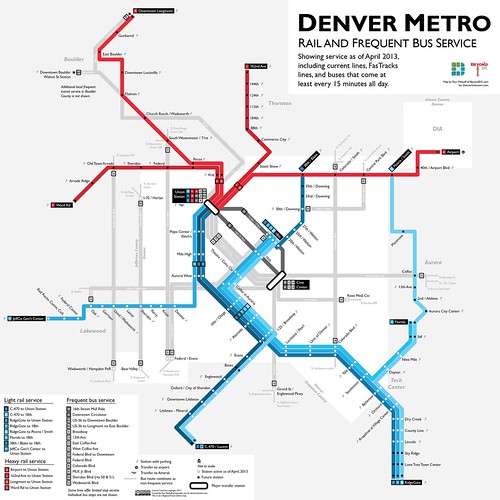
Denver rail and frequent bus map, including future lines. Click map for full size version.
Other sizes via flickr.
Average Rating: 4.7 out of 5 based on 261 user reviews.
February 27th, 2013 | Permalink
Tags: BRT, bus, commuterrail, lightrail, maps, streetcar, transportation

This map claims to show every local electric railway line that operated in the region between 1890 and 1962, regardless of who operated it or when it ran. That makes this much more comprehensive than DC Transit maps that only show one company’s lines, and only from a single year.
Some of the longer lines on this map are “interurbans, ” which were trolley vehicles that functioned more like commuter rail than central city streetcars, stopping less frequently and running on longer headways. Today we’d probably call them light rail. They’re on the map because no matter their route characteristics, they were basically electric trolleys. That includes Virginia’s well-known W&OD, which isn’t usually called a trolley line today.
The map first appeared on wikipedia and was created by the anonymous user “SDC”.
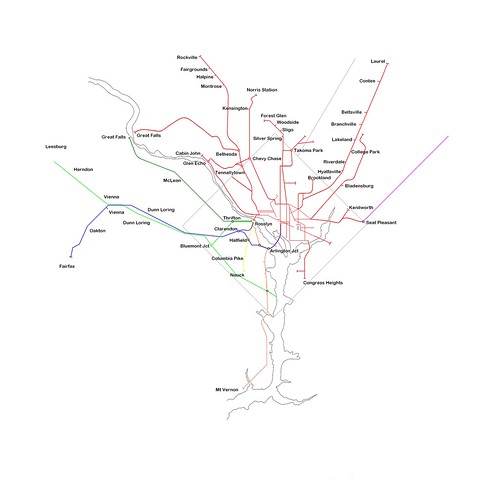
Average Rating: 4.9 out of 5 based on 210 user reviews.
January 8th, 2013 | Permalink
Tags: commuterrail, history, lightrail, streetcar, transportation

|
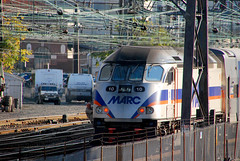
MARC. |
DC Councilmember Kenyan McDuffie tweeted yesterday that he wants the city to look into either a Metro or MARC station at the corner of New York Avenue and Bladensburg Road. Streetcar might be a better option.
That corner is easily the most suburban place west of the Anacostia River in DC, and maybe in the entire District, so it could certainly use a transit investment to help it develop a more urban character. But what sort of transit would make sense?
Metrorail is not a sensible solution, because there’s not a Metro line anywhere nearby. WMATA’s Brentwood rail yard is very close, so adding a new station at Bladensburg and NY Ave wouldn’t require all that much new track construction. But that would result in a 1-station spur of the Red Line, which would have limited usefulness. A bigger problem is that a new spur would decrease the capacity of the Red Line’s existing Silver Spring leg. Operationally it just wouldn’t make sense. And even if it did, a new Metro station would cost hundreds of millions of dollars.
MARC could be a good solution, because MARC’s Penn Line (the best one) does pass by just 1 block north of New York Avenue. An infill station there would be easy to build, and would provide about 60 trains per day. MARC stations are extremely simple, so this is something that could be accomplished relatively easily.
But 60 trains a day isn’t actually very many, if your goal is to induce transit oriented development. The relative simplicity of a MARC station makes it an attractive short term goal, but in the long term a better solution may be needed.
One mode McDuffie didn’t mention, but that maybe should be considered, is streetcar. None of DDOT’s proposed streetcar lines pass through here, but the H Street line and the Florida Avenue / 8th Street line are both close. It wouldn’t cost very much to add a spur from those lines that goes up West Virginia Avenue and ends at New York Avenue and Bladensburg Road, like this:
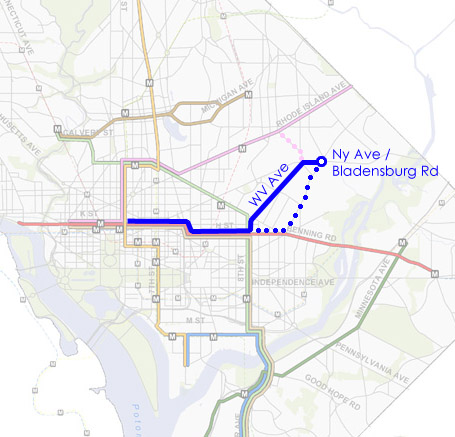
Potential new streetcar route, using portions of the H Street and 8th Street lines, with a spur up West Virginia Avenue. Dotted lines indicate alternate routes.
Another option for a streetcar spur would be to go up Bladensburg Road itself, breaking off from H Street at the Starburst intersection. That would better serve the Carver Langston neighborhood and National Arboretum, but wouldn’t be as good for Ivy City.
A third permutation could spur off of the Rhode Island Avenue streetcar, using Montana Avenue to cut south to New York Avenue. This might be the cheapest streetcar option, but it would also probably be the least useful, since it wouldn’t go to many new places.
DC has so many great transit projects in the works that anything will likely be hard to budget. Metro is probably not realistic at all, and a MARC station is the best bet for something soon. But a streetcar on West Virginia Avenue, Bladensburg Road, or Montana Avenue may well be something to shoot for.
 Cross-posted at Greater Greater Washington. Cross-posted at Greater Greater Washington.
Average Rating: 4.9 out of 5 based on 280 user reviews.
November 15th, 2012 | Permalink
Tags: commuterrail, metrorail, streetcar, transportation

In my humble and possibly biased opinion, Washington Union Station is the best train station in the US. A strong case could certainly be made for New York’s Grand Central, and there are plenty of other good ones around the country. But neither our Union Station, nor Grand Central, nor any of America’s largest or most active train stations, have a great train room. There are some small US stations that still have train sheds, such as Harrisburg, but they aren’t grand public spaces like in Europe.
But soon that will change. Denver is building a new train shed on the back of its historic Union Station, in support of a massive regional light rail and commuter rail expansion. And it’s going to be super cool. Construction has been ongoing for quite a while, but over the last week crews have started to put up the train shed itself. You can watch them at work and keep up with progress using the construction webcam.
Here’s what the train room will look like when done:
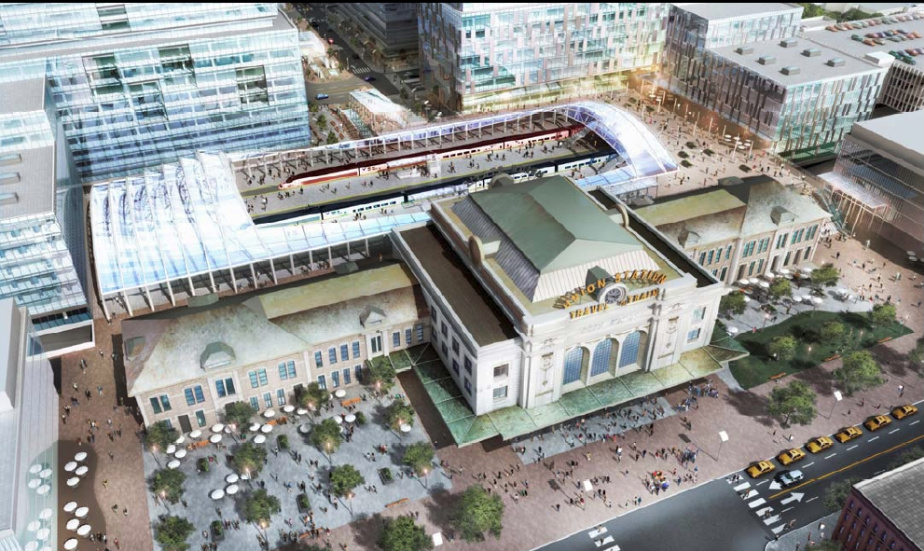
Image from the Denver Union Station Project Authority.
And here’s their construction progress, as of this morning:
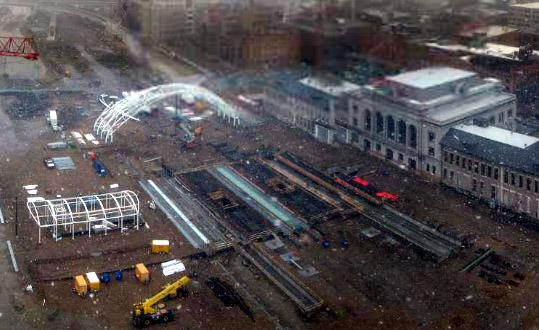
Webcam image from Kiewit Construction.
Average Rating: 4.7 out of 5 based on 189 user reviews.
November 12th, 2012 | Permalink
Tags: architecture, commuterrail, development, intercity, lightrail, transportation


The platform at NoMa Metro station is one of the best places in the United States to see passenger trains. Since NoMa is above ground just north of Union Station, visitors can see a steady stream of Amtrak, MARC, and VRE trains coming and going from Union Station. And with the US Capitol dome in the distance, there’s also the bonus of a nice setting.
A couple of weeks ago I happened to be there around rush hour, so I stuck around for 15 or 20 minutes and got a bunch of pictures. A few are shown here, with the full set of 24 on flickr.
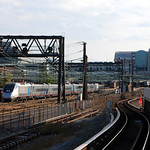 |
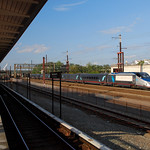
Acela. |
 |
 |

Amtrak Regional. |
 |
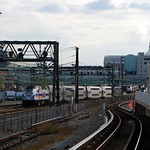 |
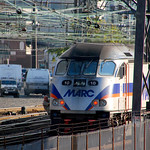
MARC. |
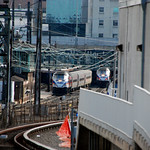 |
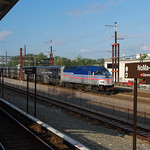 |
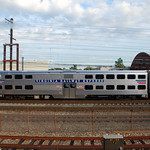
VRE. |
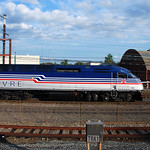 |
Average Rating: 5 out of 5 based on 191 user reviews.
November 1st, 2012 | Permalink
Tags: commuterrail, galleries, intercity, transportation

|
Media





Site
About BeyondDC
Archive 2003-06
Contact
Category Tags:
Partners
|
